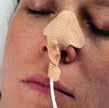Cleveland Clinic’s Supply Chain Approach to Specialized Care
How supply chain and clinical alignment plays an important role in outcomes.









How supply chain and clinical alignment plays an important role in outcomes.








What does it take to deliver best-in-class specialized medicine? Newsweek’s World’s Best Specialized Hospitals 2023 ranked Cleveland Clinic No. 1 in the world for cardiac surgery and cardiology and among the top hospitals in the world for specialized care, and supply chain plays a large – if unheralded – role.
In this issue of The Journal of Healthcare Contracting, we interviewed Brian Jones, senior director of the clinical sourcing team and physician preference items (PPI) for Cleveland Clinic. He provided us an in-depth look at how he and his team collaborate with Cleveland Clinic’s world-class doctors to provide patients with amazing care.
There are of course some very tech heavy, complicated processes involved. But I also noticed some good old-fashioned touches to making partnerships work. Mainly – the supply chain team makes itself available for the clinicians so these critical conversations don’t disrupt care. Cleveland’s clinical side is very busy in their practices and Jones told us the biggest challenge for the supply chain side is just finding time to work with them. It’s about being available at 6:30 a.m. before their OR times or when they’re done at 5 p.m. or 6 p.m. Jones’ team stresses being ready when the clinical side is available.
“It’s ensuring that we’re ready to go, we have all of the information and that it’s good, clean, accurate, understandable and actionable, and we can share it in a short amount of time,” he said.
Preparedness. Accuracy. Availability. Those are some tried-and-true keys to supply chain success no matter the size and scope of the hospital, health system or IDN.
We hope you enjoy this issue of The Journal of Healthcare Contracting.
The Journal of Healthcare Contracting is published bi-monthly by Share Moving Media 350 Town Center Ave, Ste 201 Suwanee, GA 30024 -6914
Phone: 770/263-5262
FAX: 770/236-8023
e-mail: info@jhconline.com www.jhconline.com
Editorial Staff Editor Graham Garrison ggarrison@sharemovingmedia.com
Senior Editor Daniel Beaird dbeaird@sharemovingmedia.com
Art Director Brent Cashman bcashman@sharemovingmedia.com
Publisher John Pritchard jpritchard@sharemovingmedia.com
Circulation
Laura Gantert lgantert@sharemovingmedia.com
The Journal of Healthcare Contracting (ISSN 1548-4165) is published monthly by Share Moving Media, 350 Town Center Ave, Ste 201, Suwanee, GA 30024-6914. Copyright 2023 by Share Moving Media. All rights reserved. Subscriptions: $48 per year. If you would like to subscribe or notify us of address changes, please contact us at the above numbers or address.
POSTMASTER: Send address changes to Share Moving Media, 350 Town Center Ave, Ste 201, Suwanee, GA 30024-6914.

Please note: The acceptance of advertising or products mentioned by contributing authors does not constitute endorsement by the publisher. Publisher cannot accept responsibility for the correctness of an opinion expressed by contributing authors.

While each patient journey is unique, medical diagnostics plays a crucial role in delivering data and actionable insights. At QuidelOrtho, we pride ourselves in providing these critical answers early and often in the healthcare continuum.


How IDNs and supply chain leaders navigated the tri-demic of 2022-2023.
The most recent respiratory season marked a uniquely challenging time for health systems and hospitals across the country as they squared off against a tridemic: the intersection of RSV, flu, and COVID-19. This combination of respiratory illnesses posed a dangerous threat to patients, healthcare workers, and health systems, making it a difficult time across the spectrum of care.
The Journal of Healthcare Contracting publisher John Pritchard recently hosted a webinar sponsored by Cepheid to discuss how IDN supply chain leaders are supporting a stressed care setting, dealing with supply shortages, and reducing clinical variation in pursuit of higher quality outcomes and patient satisfaction. Pritchard was joined by:
Shireen Ahmad, SSRM Strategy and Finance, CommonSpirit Health
Cairo Wasfy, Chief Resource Officer, Supply Chain, Pharmacy, & Lab at Ardent Services
Jeanne McHugh, Supply Chain Director at UHS.
Here are three big takeaways from the discussion:
1 The care setting has evolved
One of the most interesting obstacles that healthcare had to overcome was changing every approach to providing care that has been developed over the
years. It was a total shakedown from top to bottom in areas of care and prevention that have been in practice for years. While it wasn’t easy, the healthcare industry managed to pivot and create opportunities for care that didn’t really exist before.
One of the biggest and widely recognized pivots is telehealth. “The biggest thing that was new to me is telehealth,” Wasfy said. “I’ve done one myself and it was very interesting. I like being in front of my physician, but it’s something that we are migrating to. Everyone knows about the nurse shortages, but we’re starting to see an even higher ratio.”
For McHugh, it was the responsibility that other healthcare workers took upon themselves to ensure that there were no gaps in care at UHS. Because clinicians were stretched so thin, nurses and pharmacists had to step up to provide levels of care that aren’t traditionally expected. McHugh said, “You saw a variety of people stepping in where the need was greatest. This licensure variability generated more access to care, which was important in the value-based care model we had.”
Additionally, there was an increased effort in ensuring that the general public kept themselves from getting sick. “We just didn’t have enough clinicians, so keeping them healthy was very important. You saw things like pre-vaccines and pre-home test kits and an enormous amount of messaging on what to do to prevent yourself from getting sick.”
Burnout is a significant challenge in any industry, but it took on an
altogether new meaning in the healthcare setting. Organizations are now actively looking for ways to make it easier for the staff to come back to work by reducing stress.
Ahmad said, “The more burden that supply chain and other support services can lift off of clinicians ultimately reduces the stress that front line workers face today. That really should be the focus. Supply chain is a support function in the overall care model, and we should be doing everything to help promote that.”
the majority of your business there because they are the big distributors, and they will have the volume to meet your needs. When you diversify your suppliers, you can create solutions.”
At UHS, McHugh realized early in the pandemic that there is not a lot of visibility on the products in storage. She said, “There are these mini warehouses and mini storage that are controlled by the clinical teams, and we don’t have visibility to them.” Without that visibility, it’s impossible for McHugh’s team to anticipate burn
Further, CommonSpirit launched a program called Lira, which connects staff to mental and emotional health experts, with a network of coaches and experts to fit the individual needs of personnel. Programs like this provide a way to release any built-up tension in a healthy and pragmatic way.
If we want to avoid supply shortages and stay ahead of our stock, health systems and hospitals will need updated strategies and better solutions to help avoid disruptions in the future. For Wasfy, that means diversification. “(But) I don’t think we can get away from the large distributors. You need
rates or have a better understanding of what they had in stock. Her longterm strategy to is to get visibility to those ancillary pockets of inventory to better understand what’s available and what isn’t.
Now that the pandemic is seemingly coming to an end, it’s important to rebuild stock of the basics. Ahmad discussed how CommonSpirit had partnered with a company in China to directly source materials from manufacturers in Asia. “What that does is help provide a vertical supply chain solution, transparency upstream to supply critical PPE and other high utilization items like gowns and gloves that have recently been subject to major disruptions.”
If we want to avoid supply shortages and stay ahead of our stock, health systems and hospitals will need updated strategies and better solutions to help avoid disruptions in the future.
3 secrets your GPO isn’t telling you.
As the U.S. healthcare system has undergone a tremendous amount of change over the last few years, many IDN supply chain leaders are taking stock of their supplier relationships and contracts, including GPO partnerships. The perception is that any change will be too laborious on the supply chain team and the clinicians they support. The reality, though, is far different. In fact, the question supply chain leaders may want to ask themselves is, “What are we missing by not doing a reset?”

The following are 3 secrets your incumbent GPO won’t tell you about making a switch:
When was the last time your GPO examined every single contract to uncover opportunities to optimize pricing, fit into the overall portfolio and alignment with organizational goals? The process of switching GPOs shines a light on all facets of the supply chain by looking at everything.
By switching, many health systems see upwards of a 30% uptick in contract compliance that the supply chain team didn’t even know should be under contract and was missed by the incumbent GPO. Contract compliance is important now more than ever since supplies not covered under contract can see 250% higher inflation than those covered by your GPO contract. 1
Unless your partner has the analytics, SMEs and field team to consistently identify opportunities and operationalize changes, you could slowly and imperceptibly lose that edge. Every hospital and health system would benefit from a systematic evaluation of its supplier contracts. The GPO is your number-one advocate for the best pricing, tier management, and value. And, through the evaluation, you’ll get free consulting services to make the best decision no matter who you pick.
With the right partner, your pricing won’t be disrupted during the switch. A grandfather clause will hold your pricing
in line with where it is today while you explore savings opportunities amid all categories. Perhaps even more important, you won’t lose any of your supply chain team’s time, staff and capacity, nor that of your clinicians.

Your GPO partner should do the heavy lifting on the front and back end of the evaluation, reset and implementation process, freeing up internal staff for more value-add work. Once you establish key stakeholders within the organization and selection criteria, engage GPO partners in a 5-step comprehensive GPO assessment process, describe your goals, speak with or visit reference sites, and review the implementation plan to ensure that your team doesn’t get stuck babysitting, filling gaps in contract coverage or having to join another regional aggregator to achieve the portfolio price you deserve.
Think beyond the market basket. While it is a useful quantitative tool, your GPO should be able to go far beyond the price point. Health systems don’t need more solutions. They need a partner that will come alongside and demonstrate an understanding of your goals – a partner that can not only tell you what your score is but provide rapids insights and a support model to achieve your goals without a herculean lift internally.
Indeed, the right GPO partnership moves beyond fee share and into being a transformation engine for hospitals and health systems. The view is well worth the climb. Through this partnership, supply chain can become a chief driver of culture change, leading to better financial and clinical outcomes for patients and the organization.
Every hospital and health system would benefit from a systematic evaluation of its supplier contracts. The GPO is your number-one advocate for the best pricing, tier management, and value.JENNA HUGHES
The healthcare industry staff shortages have called for state-wide and national action in support of the nursing profession.

resources in nursing schools, according to the American Nurses Foundation.
In a study on the shortage from the American Nurses Foundation, 57% of those surveyed nurses said they felt “exhausted” in the past two weeks, and 43% said they felt “burnt out.” Only 23% said they felt “motivated and supported” in the workplace.
Many experienced nurses decided to leave the field during the height of the pandemic due to stress and burnout. Many more are leaving employers for healthcare agency positions, or different careers entirely, with the hope of finding higher pay and less stressful work environments.
Nursing shortages, already an issue pre-COVID, were exacerbated by the COVID-19 pandemic. Throughout the healthcare industry, hospitals, outpatient centers, and clinics have tirelessly sought qualified candidates to fill open nursing positions.
The U.S. Department of Labor predicts that more than 275,000 nurses are needed from 2020 to 2030, and that employment opportunities for nurses will grow at 9%, faster than all other occupations from 2016 through 2026.
The pandemic heightened staffing shortages throughout the healthcare industry. Already low on staff, healthcare industry employees worked long hours in stressful, unprecedented conditions.
Nurses, already in a fast-paced and high-demand career field, have faced a variety of new stressors because of the pandemic. Nationally, nurses are navigating increased patient volume, longer hours, critically ill patients with COVID-19, and emotional trauma and distress. Other factors contributing to the shortage include an aging population, an increase in early retirement, high turnover, burnout, exhaustion, and a lack of
National shortages have led to delays in patient treatment, overcrowding of emergency rooms, and decreased patient well-being. Fewer nurses mean fewer staff must care for more patients. “Nursing shortages lead to errors, higher morbidity, and mortality rates. In hospitals with high patient-to-nurse ratios, patients experienced higher mortality and failureto-rescue rates than facilities with lower patient-to-nurse ratios,” according to The National Library of Medicine.
Nurses are increasingly seeking support and resources within the workplace to cope with the demands of the profession. According to the American Medical Association, thoughtful, deliberate attention is needed “to ensure there are enough nurses available to provide the expert care patients need.”
So, what has been done nationally and state-wide to retain nurses in the healthcare industry?
The national and state response to the nursing shortage focuses primarily on workplace support, legislation, and improving nursing education programs.
Nurses are advocating for better working conditions, including higher staff-topatient ratios, mental health resources and workplace support. According to the National Academy of Medicine’s recommendations for federal government action, “nursing organizations should initiate the implementation of structures, systems, and evidence-based interventions to promote nurses’ health and well-being.”
Healthcare organizations have implemented strategies such as recruiting travel nurses, increasing wages and bonuses, offering mental health and well-being support, and adapting staff models to address nurse burnout.
According to an American Nurses Foundation survey, 44% of respondents said their organization recruited travel nurses while 20% said they experienced increased access to mental health and well-being support services through their workplace.
Some states have considered changing healthcare practitioners’ scope of practice to address the shortage of providers.
According to a Penn Live Report, two Pennsylvania state senators in late January introduced a bill that would give full independence to nurse practitioners.
In Pennsylvania, nurses work under the supervision of physicians. Yet many other states give much more independence to nurse practitioners, enabling them to fill roles such as owning and operating their own practice and making house calls, the report said.
Also, according to the American Academy of Physician’s Associates, a bill proposed in Colorado to the Colorado Senate Health and Human Services Committee was passed in early March that would remove the requirement for PAs to be supervised by a physician, the report said. The expansion of authority in Pennsylvania and Colorado would serve as a solution to healthcare industry staffing issues by allowing already employed professionals to issue care.
allow nursing students to fast-track their education and begin their careers earlier, and encourage more students to pursue education by easing the burden of tuition.
Nursing education schools have worked to address the nursing shortage by partnering with local hospitals. The goal of these partnerships is to increase accessibility of education and participation in nursing programs.
Oklahoma City University and SSM Health St. Anthony’s in Oklahoma have developed a hospital-university partnership that provides students scholarship opportunities. The financial assistance
Nationally, Congress introduced the “Stop Nurse Shortages Act, H.R. 9200” that would authorize grant funding in support of nursing schools. The funding would be allocated for nursing education programs to “create and expand accelerated nursing degree programs, hire and retain faculty, and offer financial assistance to students,” according to the American Organization for Nursing Leadership. Funding allocated for educational programs would provide support to nursing schools,
aims to encourage qualified graduates to enter positions in the healthcare industry.
Cleveland Clinic introduced a similar hospital education program, the ASPIRE Nurse Scholars Program, which reaches out to high school juniors and seniors who are interested in a career in nursing.
Education programs such as these, and many more across the nation, foster an early interest in nursing and encourage recent graduates to enter and remain in the field.
According to the National Academy of Medicine’s recommendations for federal government action, “nursing organizations should initiate the implementation of structures, systems, and evidence-based interventions to promote nurses’ health and well-being.”
Laboratories need to seek opportunities for stability and improvement across the continuum of care. While staffing levels have decreased, projections show that the demand for lab services and testing will increase by 13% between 2016 and 2026.
Labor continues to be one of the highest expenses in healthcare. Shortterm costs have risen 37% between 2019 and 2022. There is currently not enough staff to cover throughput, which paints a grim picture for patient care since 70% of medical decisions depend on laboratory results.
Automation is an incredible resource that labs can utilize to increase productivity and the agility of any tests that need to be run. With automation, providers can reduce human error by simplifying and streamlining the workflow of the lab by using specimen tracking software, which will improve patient care. Implementing automation within your lab could allow your organization to move full-time technicians to higher value areas.
For the clinical side, Fisher Healthcare has several solutions that can improve laboratory processes. Products like barcoded Thermo Scientific Matrix screw top tubes can easily track specimens, while other solutions can load several protocols at the same time to improve efficiency.
From a non-clinical standpoint, eCommerce platforms can help with tracking orders, as well as viewing complementary and alternative products. Automated reports for backorders,
shipping notifications, savings opportunities, and standardization recommendations for improved operations save administrative time.
Fisher Healthcare provides a consultative, COFI model approach that ensures a comprehensive view of the laboratory business from multiple perspectives:
Clinical: Improving turnaround time, quality and reliability of results are at the forefront for many laboratories. These metrics directly contribute to patient outcomes. Fisher Healthcare carries in-house expertise to review all areas of the lab; tapping into

an extensive network of industry knowledge to provide critical insight on workflow optimization or innovative technologies.
Operational: Fisher Healthcare has one of the most comprehensive portfolios in the marketplace. That enables laboratories to gain access to new products and complementary products when supply challenges occur. Identifying ordering efficiencies is also a way that laboratories can gain operational efficiencies.
Financial: Laboratories are looking for opportunities for both cost containment and revenue generation. Workflow improvements, standardization options, and contract maximization are ways laboratories can save money.
Innovation: Laboratories need automation solutions to keep pace with demands and better satisfaction and outcomes for patients. As the market leader, Fisher Healthcare has strong relationships with its supplier partners which enables conversations to take place to influence the development and manufacture of products laboratories need to combat challenges in today’s ever-changing healthcare marketplace.
For more information on Fisher Healthcare’s portfolio of lab products and services, visit fishersci.com.


The total cost of patient care is a winding path delicately traversed.
In past generations of Value Analysis, the focus was more on savings with contract renewals, the development of a capitated price model and matrices and price at the pump downward shifts, said Shaneka Demps, Manager, Value Analysis, BayCare Health System. “Compared to three years ago, Value Analysis today has shifted to finding value in utilization practice changes, eliminating unnecessary waste and establishing clinically appropriate criteria for use in some cases,” Demps said.
“Even more so, we are all traveling quickly down the road of total cost of patient care inclusive of reimbursement differences, length of stay reduction and the impact of hospital-acquired conditions. This road has become a winding path that must be delicately traveled with each Value Analysis project.”
In a conversation with The Journal of Healthcare Contracting, Demps discussed how Value Analysis professionals can effectively interact with and educate Shaneka Demps

The next generation in infusion management software is here.
DoseTrac® Enterprise Infusion Management Software

suppliers, as well as a glimpse into what the future of the profession may hold.
How do you interact with and screen suppliers during the Value Analysis process? What are the parameters you set for suppliers?
Demps: We interact with new or interested vendors via our supply chain interest portal. Vendors are able to reach out by a direct email to our Value Analysis Department or Contracting Team. Depending upon the category, vendors are set up with the appropriate Clinical Value Analysis RN or Contract Manager to have a brief conversation exploring a potential partnership.
Our goal is to connect that new vendor with our service line leader for a brief 10-minute introduction to our system and to describe how they may provide a solution to enhance our current product and services portfolio, improve quality and save costs.
How are Value Analysis appointments scheduled with suppliers? Do you prefer them to contact an internal champion first (e.g. – physicians, service line administrator, nurse leader) who then notifies you of a request?
Demps: We want them to contact us initially so we’re aware of the product or category they plan to promote. That way we can head off any issue with existing contracts and compliance. Once the initial review is cleared, then they would work with clinicians to identify a potential champion within the BayCare Health System. That champion would then be the best spokesperson when reviewing with the committee and would be willing to fill in the necessary clinical pieces, which is super helpful.
The challenge here is not to overstep, which may be quite easy to do. For example, leaving samples or doing a “small trial” would be against our policy. Every item has to be fully vetted and approved for trial by our Value Analysis Committee prior to use on a patient. That means that even if your clinical champion is excited about your technology and ready to give your product a try, they must follow our internal process and present you and your product to the committee before any trials may begin. This can be a bit of a sticky widget.
very savvy and fully aware of how the Value Analysis process works. They are excellent at steering the vendors in the right direction.
If there is a question, we are happy to connect with the vendor and speak about our process and learn more about how they envision a long-lasting partnership with our hospital system.
What one thing would you change to help improve the value analysis process in the future?
Demps: Today, we value true partnership with our vendor partners driven by clinical
One last caution of approach with the “clinical champion” is not to overwhelm them. Being too assertive or not setting appointments with the clinicians could leave them feeling uneasy with your future attempts to communicate.
How do you educate suppliers? What are some best practices for suppliers to undertake in order to start the Value Analysis process?
Demps: Generally, our Supplier Information page on the BayCare Health System website provides specific information on our processes to help our vendor partners understand what to expect as well as what we expect from them. Our clinicians are also
engagement with our service lines and physician champions. I believe that the Value Analysis process will always be an evolution. It must be nimble yet firm.
The one thing that I would change, with hopes to improve the process in the future, would be greater crowd sourcing and data sharing with similar IDNs. Sharing innovative ideas with each other and the blueprint that it took to achieve success could help every Value Analysis Team across the region and beyond. Every healthcare system has its own identity and DNA, but at the true center of each one, we are patient centric, we wish to be sustainable and to provide extraordinary care to our community.
Sharing innovative ideas with each other and the blueprint that it took to achieve success could help every Value Analysis Team across the region and beyond. Every healthcare system has its own identity and DNA, but at the true center of each one, we are patient centric, we wish to be sustainable and to provide extraordinary care to our community.
Self-rooming versus traditional escorted rooming has become commonplace after the pandemic in health systems across the nation.
When visiting a physician’s office for an appointment, patients typically arrive, check in at the front desk, and then wait until a clinician or nurse calls them back from the waiting room to be seen by the doctor.
The traditional rooming system is what most patients experience when visiting a clinician’s office. However, during the COVID-19 pandemic, many clinical offices began to implement self-rooming into their practice model.
Self-rooming is when a patient checks in and then proceeds directly to an exam room, bypassing the traditional waiting room experience of being led to an exam room by a staff member.
In October through December of 2020, a survey conducted by the Annals of Family Medicine on self-rooming preferences found that 86% of patients preferred self-rooming to traditional rooming. Over one-half of the staff surveyed also preferred self-rooming, according to the Annals of Family Medicine survey.
“Few patients felt less welcomed (10.6%), less cared about (6.8%), more isolated (15.6%), more lost/confused (7.6%), or more frustrated (3.2%) with self-rooming compared to escorted rooming.” Patients, especially those ages 65 and older and those in family medicine clinics preferred self-rooming, according to the Annals of Family Medicine.
Self-rooming decreases wait times for patients, increases patient satisfaction, and increases staff efficiency. Without the need for a staff member to call out a patient’s name and escort them to their room each time they come in for healthcare, more time can be spent by staff on other tasks to increase the overall efficiency of a doctor’s office.
“Our customers who use the selfrooming model typically have high patient satisfaction scores,” says Jeanne Kraimer, a product marketing manager for Midmark RTLS Solutions, Inc. The company’s Patient Flow Optimization solution uses real-time locating system (RTLS) technology to help facilitate clinic workflow. “Especially when paired with a collaborative care model, where various services such as phlebotomy are provided in the exam room, the efficiency gains not only mean shorter visits for the patient, it may also allow the clinic to see more patients or add providers to their schedule.”
During the COVID-19 pandemic, traditional waiting rooms became unsafe due to the potential for virus transmission. Health systems responded to the threat of COVID-19 spread in waiting
rooms by implementing self-rooming inside buildings with traditional clinical layouts. Self-rooming during the height of the pandemic promoted increased social distancing and aimed to avoid virus transmission in waiting rooms.
“While recent events certainly increased interest in this model, we’ve been helping clinics with self-rooming since 2010,” says Kraimer. “Our customers who use this model had a head start in keeping their patients safer during the pandemic.”
Many health systems overcame self-rooming technology concerns during the pandemic and rapidly redesigned the rooming process with little need for technology. The result was an increased use of the self-rooming system. Self-rooming has continued to be implemented as a postpandemic feature across health systems.
“Although it isn’t necessary to implement self-rooming, having visibility into your entire clinic from a computer screen with RTLS technology can make the process easier,” Kraimer explains. “Being able to see which exam rooms are clean and available for patients, where each patient is located, which caregivers have seen them and who hasn’t seen them yet can make the daily management of selfrooming workflows quite seamless.”
 BY GRAHAM GARRISON AND DANIEL BEAIRD
BY GRAHAM GARRISON AND DANIEL BEAIRD
Newsweek’s World’s Best Specialized Hospitals 2023 ranked Cleveland Clinic No. 1 in the world for cardiac surgery and cardiology and among the top hospitals in the world for specialized care. It’s the second consecutive year Cleveland Clinic was ranked No. 1 for cardiac surgery. Newsweek’s rankings, according to the weekly news magazine, help those in need of care “to know which hospitals or state-of-the-art facilities have the most accomplished physicians and diagnosticians, and offer the highest level of care.”
How supply chain and clinical alignment plays an important role in outcomes.Photography credit: Cleveland Clinic
Diagnosing and managing hypertension starts with accurate BP measurements — so you need technology you can trust. The Welch Allyn Spot Vital Signs 4400


device offers:
• Ease of use
• Built-in BP Averaging
• Accurate BP Measurement with SureBP
• EMR connectivity

See it in action with a live, virtual demo today. HILLROM.COM/VITALSDEMO
Hillrom.com
Baxter, Hillrom, Spot Vital Signs, and Welch Allyn are trademarks of Baxter International Inc. US-FLC157-230025 Ver 1 05/23
Brian Jones is the senior director of the clinical sourcing team and physician preference items (PPI) for Cleveland Clinic. His team is tasked to be the subject matter experts within those specialized areas and to lead all initiatives and manage contracts for them. After witnessing some of the challenges surrounding PPE during the pandemic, Cleveland Clinic segmented its teams into the PPI side and the commodity side. Jones leads a director of capital and a director of ORs, and he’s also the director of the heart, vascular anesthesia and respiratory teams on the PPI side.
“When a request comes in from a physician, supply chain takes that work and that new product, and does all of the comparisons,” Jones said. “We identify what’s currently being utilized and if it’s a brand-new procedure, we identify if there’s reimbursement and get all of those details. We package that for our clinical leadership review and that goes to the service line leaders, administrators and budget owners so we can look at all of those inputs.”

The physician is brought in for a presentation to walk through the strategy for the device’s utilization. At that time, it’s either approved for a three- to six-month trial to measure outcomes or it’s approved for permanent use with guardrails and guidelines associated with the type of
patient for use and the data used for value measures. Or the device could be denied or approved for permanent use.
“In each of our service lines, we have established committees,” Jones said. “So, in GI, endoscopy and endovascular, for example, we have committees that those requests flow through. So, it gets to the appropriates users who truly understand the devices and they’re the ones making the decisions.”
Jones’ team sits on about 15 committees to help facilitate these discussions. He says the support from the top – at the institute chair level – is the key to success at Cleveland Clinic with specialized care areas. That support gives them the confidence to see projects through and to speak up at staff meetings.
“Good, clear dialogue and everyone respecting each other’s opinions and relying
on the facts and the data in front of them has been successful for cost savings and engagement,” he said.
Jones is excited about the work being done within Cleveland Clinic’s Sydell and Arnold Miller Family Heart, Vascular & Thoracic Institute because it’s new and different.
“It’s not just the project work of which supplier are we going to award what, but it’s within a portfolio of how we reduce cost within a type of procedure, without compromising the quality of patient care” he said. “It’s identifying cost per case by surgeon on similar procedures and what are the outliers. That’s helping drive some of the initiatives around waste management, utilization and appropriate use criteria.”
A clinical leader will identify two or more individuals within their clinical institute to collaborate with supply chain to help build out teams and opportunities to vet products. The group meets regularly to review standardization opportunities, appropriate use criteria, guidelines, waste reduction and cost reduction, while prioritizing patient safety and quality care.
The heart, vascular and thoracic team has identified key champions this year and Jones notes the level of engagement and excitement among the staff is appealing to work with. “I put out the monthly numbers for them and they’re enjoying it,” he said. “It’s a bit different. They still have their day jobs but they like the collaboration and working through some of these opportunities.”
“In each of our service lines, we have established committees. So, in GI, endoscopy and endovascular, for example, we have committees that those requests flow through.”
– Brian Jones, senior director of the clinical sourcing team and PPI, Cleveland Clinic
















































Patients travel from all 50 states and 136 countries to the Heart, Vascular & Thoracic Institute for expert care and exceptional outcomes. It’s home to many of the world’s best physicians practicing cardiovascular medicine and surgery. In 2021, Cleveland Clinic cared for 786,871 patients at its main campus in Cleveland, Ohio. It has received the highest overall composite score star rating – 3 of 3 stars, a rating that reflects better than expected outcomes in each category – in all Society of Thoracic Surgeons (STS) cardiac and thoracic star rated categories:
Isolated coronary artery bypass (CAB)
Isolated aortic valve replacement (AVR)
Aortic valve replacement with coronary artery bypass (AVR+CAB)
Mitral valve repair and replacement (MVRR+CAB)
Transcatheter aortic valve replacement (TAVR)
Lobectomy for lung cancer
Pulmonary for lung cancer
Esophagectomy for esophageal cancer
Surgical outcomes are grouped by disease umbrella. This brings together the teams that focus on specific disease processes led by an umbrella director. The structure supports the investigation of these disease processes and the tracking of outcomes of innovations in care delivery.
“We have five supply chain medical directors, and they carve out a portion of their time to assist in supply chain challenges,” Jones said. “If we have a disruption or need to identify an alternative, the first person we go to is our supply chain medical director to start vetting it and understanding if it’s accurate and appropriate.”
Jones says they vet many of their presentations around standardization or cost opportunity through the supply chain medical directors before large committee meetings. “They play a very important role in bridging the supply chain side to the clinical side,” he said.
Each month, Jones’ team puts together a savings tracker. It covers the average utilization of a device and the appropriate use criteria that is built in.
“They don’t know that, so it’s our job to educate and create awareness in these committees and groups in order to identify when it’s appropriate to use the most expensive widget,” he said. “That’s what we’re working on and tracking savings that way.”
“That’s level setting for every meeting we have with our physicians,” he said. “No decisions made by the group are to ever impact the quality of care of our patients. That gives them the breathing room to say, this isn’t just about reducing costs, but it’s maintaining the highest level of quality and finding areas of opportunity where we didn’t have the awareness of price variations. But now we do, and we can make informed decisions of what to utilize.”
Jones says the physicians want to be good stewards and it’s his team’s job to educate them on the differences in price, for example, if a supplier has three generations of devices.
Clinical leaders at Cleveland Clinic educate the supply chain side too. “It’s incredible to hear them go around the table discussing different devices. A lot of people would like to hear that. They are amazing surgeons and educators who are always willing to work with us and teach us as well,” Jones said.
The clinical side is very busy in their practices and the biggest challenge for the supply chain side is just finding time to work with them. It’s about being available at 6:30 a.m. before their OR times or when they’re done at 5 p.m. or 6 p.m. Jones’ team stresses being ready when the clinical side is available.
“It’s ensuring that we’re ready to go, we have all of the information and that it’s good, clean, accurate, understandable and actionable, and we can share it in a short amount of time,” he said. “If we fail there, it’s going to be much more difficult to get that access again. So, let’s be prepared.”
“If we have a disruption or need to identify an alternative, the first person we go to is our supply chain medical director to start vetting it and understanding if it’s accurate and appropriate.”

In today’s reality of high vendor backorders, working with Dukal can ensure you have what you need, when you need it.
Well before congested ports began to snarl supply chains, Dukal has been committed to providing the highest level of transparency and trust to ensure our products are available to meet the everyday demands of today’s healthcare professionals.

Dr. Jimmy Chung leads the clinical integration for Advantus Health Partners to reduce waste and variability.
Advantus Health Partners works to ensure clinical validation of key products and services, waste reduction and standardization of major product categories as solutions beyond traditional supply chain GPO management. Launched in 2021 by Cincinnatibased Bon Secours Mercy Health, one of the 20 largest health systems in the U.S., Advantus is led by healthcare professionals and providers with an aim to modernize and create more efficient operations between the supply chain and clinical sides.
Dr. Jimmy Chung is its chief medical officer.


“The big crisis in healthcare is that current spending is unsustainable,” Dr. Chung said. “The U.S. spends twice what similar countries spend on healthcare, and much of that has to do with waste and variability in how we practice in the U.S. and the resources we utilize in supply chain.”
To help address this crisis, one business model for Advantus reduces the unnecessary variability in clinical care delivery.
the equation. Clear expectations are set with physicians that their feedback will be used when procuring products, but not on a preference basis.
“We don’t have 20 different brands we’re offering through our contracting or GPO portfolio,” Dr. Chung said. “We want to vet what we believe delivers the highest value in patient outcomes and cost. That’s how we want to engage clinicians into our supply chain model.”
Dr. Chung added that they don’t believe physician preference adds value.
reducing waste and variability. There are huge clinical integration components at work with those organizations,”
Dr. Chung added. “It’s about spreading the message to hospital executives and C-suites that supply chain needs to be at the table, and in order to do that, it needs to gain legitimacy.”
For example, SMI, a nonprofit community of providers and industry partner organizations, has released a new tool to measure the criticality of products to help create a more resilient supply chain. It’s an enhancement to SMI’s Resilience Maturity Model that was released in 2022.
The Critical Product Attributes Framework provides a common structure and language for healthcare organizations to identify the criticality of products they need in times of crisis. It aims to standardize the process of defining product critically and ultimately aid in providing better patient care. SMI’s Physician Advisory Council provided intelligence and insights included in the tool. The new tool:
As Dr. Chung puts it, if there are 20 different vendors for orthopedic implants at a hospital, then that’s 20 different ways of doing the surgery, and that leads to mistakes and errors that could harm the patient, while creating operational inefficiency and waste.
He has studied data over the past 10 years that suggests there are opportunities to standardize healthcare purchasing to reduce this variability, and patient risk and supply chain can become a strategic driver in it, playing a critical role in patient outcomes.
Advantus delivers products that have been vetted for quality and value, but physician preference isn’t a part of
“Variability should only be accepted in cases where a necessary need must be considered like a unique patient or research,” he said. “A true clinical need has to be demonstrated before we go off contract.”
Dr. Chung says health systems are steering conversations more toward standardization and best patient outcomes. But supply chains still struggle to be heard as strategic drivers in a lot of hospitals.
“We’re thankful for organizations like AHRMM and SMI that are focusing on
Provides a structure for identifying the criticality of products using a common language.
Allows trading partners to have clear conversations about product criticality.
Supports the broad use of the Resilience Maturity Model to drive a more resilient supply chain designed to meet future demands.
The COVID-19 pandemic brought supply chain to the forefront of healthcare. Physicians never had to worry about allocating masks before the pandemic, for example, but they helped administer
“Hospitals realized that bringing in physicians could be useful for supply chains as a whole, so you see roles like medical director of supply chain becoming more popular. Many of the hospitals with strong supply chains now have a medical director or physician advisor in place.”













protocols and appropriate utilizations for N95 masks during the crisis.
“Hospitals realized that bringing in physicians could be useful for supply chains as a whole, so you see roles like medical director of supply chain becoming more popular,” Dr. Chung said. “Many of the hospitals with strong supply chains now have a medical director or physician advisor in place.”
Those medical directors like Dr. Chung must communicate clearly with physicians about product changes and variability reductions. Most physicians easily adjust, but a small percentage might have genuine concerns.
“They might not be convinced it’s a better product, or they aren’t comfortable with it,” he said. “And there aren’t any incentives for surgeons to seek ways for surgeries to be done the same way.”
Standardization in surgeries would reduce errors and inefficiencies.
“There’s a lot of opportunity in the medical profession to have these conversations, but it’s not happening at that level because physicians aren’t trained in that area,” he said. “We’re still using an apprenticeship type of model. Being unique and doing things your own way is still valued in surgical circles.”

But patients are at risk for different outcomes if the same surgery is done in different ways. Some will have worse outcomes than others or some might have a longer length of stay. Hospital leadership is seeking better standardizations to solve these problems so outcomes can become more predictable.
“And if physicians aren’t driving that conversation, supply chain can start the dialogue,” Dr. Chung said. “We’re all aligned on the social determinants of health, sustainability, and the current healthcare crisis. Let’s start with that.”
Then, Dr. Chung says, supply chain and physicians can work on a common plane together. Reducing variability, for example, can be done if it’s demonstrated
that a pared down number of vendors provide more value to physicians and patients downstream.
“There’s so much variability that it’s impossible for a patient to feel like they’re making an informed decision when they’re facing surgery. They have to put their faith in word of mouth and assume that it will lead to a good outcome,” Dr. Chung said.
Patients are at risk for different outcomes if the same surgery is done in different ways. Some will have worse outcomes than others or some might have a longer length of stay.
Eliminates cost and difficulty associated with cleaning and maintenance of small lumens.
When processing reusable suction tubes there is the potential for blood and organic debris to clog or block the lumen.





Contaminated tubes create the potential for infection in new patients.
Eliminates cost and difficulty associated with cleaning maintenance and repair of small lumen tubes.

Physician not limited in lumens size or length.

Teardrop shaped thumb valve for precise suction regulation from gentle to strong.
Extreme heat is ‘uncharted territory’ for the public and their healthcare providers.
Summer’s almost here. That’s good news, especially for those Up North. But too much heat can be too much of a good thing. Global temperatures and the frequency and intensity of heatwaves will rise in the 21st century, says the World Health Organization. Debating the cause of rising temperatures may be a job for politicians, but addressing the health implications will fall to hospital emergency departments, public health authorities, community health centers and primary care physicians.

Heatwaves can acutely affect large populations for short periods of time, often triggering public health emergencies, excess mortality and cascading socioeconomic impacts, including lost work capacity and labor productivity, says WHO. But extreme heat has a long-term impact on health as well. Extended periods of high temperatures create cumulative physiological stress
on the human body, exacerbating the top causes of death, including respiratory and cardiovascular diseases, diabetes and renal disease.
“We need to start with ensuring that we appreciate that temperatures not typically thought of as hot may pose real risks to health,” says Aaron Bernstein, M.D., interim director of The Center for Climate, Health, and the Global

Environment at Harvard T.H. Chan School of Public Health (Harvard Chan C-CHANGE) and a pediatrician at Boston Children’s Hospital. “We need to be able to identify those patients who may be most at risk, and we need to start taking action before heat sets in. That’s why we’ve created resources to help providers make plans in advance for hot weather. With plans in place, which include where to go to stay cool, patients stand a better chance of staying safe. When warm temperatures are forecast, clinics can make outreach to patients at risk to remind them to follow their plans.”
Globally, extreme temperature events are increasing in their frequency, duration and magnitude, reports WHO. Between 2000 and 2016, the number of people exposed to heatwaves increased by around 125 million. In 2015 alone, 175 million additional people were exposed to heatwaves compared to average years. In 2003, 70,000 people in Europe died as a result of the June-August event, and in 2010, 56,000 excess deaths occurred during a 44-day heatwave in the Russian Federation.
In the United States, extreme weather events, especially heatwaves, are the leading cause of weather-related deaths, according to the Centers for Disease Control and Prevention. In the summer of 1995, for example, the City of Chicago endured a heatwave that resulted in at least 469 heat-related deaths and 739 excess deaths during the most intense period (July 14–July 20).
During the last days of June 2021, Pacific Northwest areas of the U.S. and
Canada experienced temperatures never previously observed, according to World Weather Attribution, an initiative among climate scientists and climate impact specialists around the world. Temperatures exceeding 40 degrees Celsius (104 F) occurred from Sunday to Tuesday, June 27-29. It is noteworthy that these record temperatures occurred one month before the climatologically warmest part of the year (end of July, early August).
those with pre-existing cardiovascular conditions (e.g., ischemic heart disease, coronary heart disease, heart failure), the heart is not as proficient at meeting the increased demand required to rid the body of the excess heat.
Others who can be adversely affected by extreme heat include:
Pregnant women and babies. Studies have shown that the fetuses
temperatures rise. What’s more, evidence suggests that climate change will affect those with neurological disorders in the near future, including Alzheimer’s and non-Alzheimer’s dementia, epilepsy, Parkinson’s disease and stroke, according to research reported in the journal PeerJ.
Other at-risk groups include people who work outdoors, outdoor athletes, the socially isolated and those with incomes below the federal poverty level, as well as communities of color, reports the National Institute of Environmental Health Sciences. In addition, people living in densely populated cities are more likely to be impacted by the urban heat island effect, where manmade surfaces absorb sunlight during the day and then radiate the stored energy at night as heat.
The CDC reported more than 3,500 emergency department visits for heat-related illness in May and June of that year in Alaska, Idaho, Oregon and Washington State. Nearly 80% of the visits occurred between June 25 and 30.
Extremely hot days, as well as days with moderately high ambient temperature and high humidity, can cause increased levels of illness and death by compromising the ability of the human body to regulate its internal temperature, according to the CDC.
A portion of blood from abdominal organs – and in severe cases, all organ systems – is redirected to the skin to accommodate the dissipation of internal heat. Maintaining a steady blood pressure during such significant vasodilation requires an increased cardiac output. The cardiovascular systems of the young and healthy can usually adapt to such demands. However, in the elderly and
of pregnant mothers are vulnerable to increasing temperatures, and that exposure to extreme heat during pregnancy can cause congenital heart defects, especially if experienced during particular weeks of gestation, reports CDC.
People prone to migraines. Dehydration can trigger migraines, according to Cedars-Sinai Medical Center in Los Angeles. In extreme heat events, it’s best to retreat to a dark, quiet room.
People with multiple sclerosis. MS symptoms – including vision problems, weakness, pain and confusion – can be aggravated when the body gets overheated. This is called the Uhthoff syndrome.
People with autoimmune conditions, such as lupus and rheumatoid arthritis. Direct sunlight can cause joint pain and fatigue.
In October 2022, researchers reported in JAMA Network Open that the incidence of appendicitis appears to increase when
After studying extreme summer surface temperature events in 1,056 U.S. counties, researchers from the School of Global Policy and Strategy at UC San Diego reported that the poorest tracts (and those with lowest average education levels) within a county were significantly hotter than the richest (and more educated) neighborhoods. In addition, neighborhoods with higher Black, Hispanic and Asian population shares were hotter than the more White, non-Hispanic areas in each county. They ascribed the disproportionate heat surface exposures faced by minority communities to more built-up neighborhoods, less vegetation, and – to a lesser extent – higher population density.
Children are at risk too, given their higher-body surface-area-to-mass ratio and lower sweating capacity, says CDC. In fact, among those suffering heat-related illness, children compose almost half (47.6%), according to researchers at Johns Hopkins University School of Medicine. “In the pediatric population, the most
‘ We need to be able to identify those patients who may be most at risk, and we need to start taking action before heat sets in.’



common forms of heat-related pathology occur in exercising adolescents and in children left unattended in vehicles or excessively warm environments,” they found. “Pediatricians must effectively counsel caregivers in recognizing the dangers related to heat exposure and preventing dehydration and [heat-related illness]. When prevention fails, prompt recognition and treatment of heat-related illness become paramount.”
“Our rapidly warming climate is bringing us into uncharted territory,” according to World Weather Attribution. “Adaptation and mitigation are urgently needed to prepare societies for a very different future.”
In April 2022, Harvard Chan C-CHANGE announced it would collaborate with relief/development organization Americares in the “Climate Health Equity for Community Clinics Program.” Funded through a grant from Johnson & Johnson, the three-year programs are intended to improve operations in more than 100 safety net health clinics in areas where climate change disproportionately impacts the health of vulnerable communities.
“While we tend to see the greatest effect of heat on health in the first few days of extreme heat, prolonged periods of high heat may promote power outages, affect mental health (in no small part due to people having to curtail normal activities), and in many parts of the world, reduce crop yields and make water scarcer, each of which can affect health too,” says Dr. Bernstein. “Primary care providers can help plan for power outages in particular, especially for patients who rely on electric devices (e.g., CPAP) and through giving appropriate guidance on medication use.”
To help community health centers and clinics better manage care and protect patients from climate risks, the Center for Climate, Health, and the Global Environment at Harvard T.H. Chan School of Public Health (Harvard Chan C-CHANGE) in collaboration with Americares and with financial support from Biogen, released a new “Climate Resilience for Frontline Clinics” tool.
Materials on extreme heat are dedicated to protecting patients with certain health conditions that require tailored guidance, such as asthma, cardiovascular disease, COPD, chronic kidney disease and end-stage renal disease, diabetes, dementia, multiple sclerosis, pregnancy, and mental health conditions. For providers, the toolkit includes chapters on:



Chronic kidney disease and end-stage renal disease and heat.
Chronic obstructive pulmonary disease, asthma and heat.
Cardiovascular disease and heat.
Dementia and heat.
Diabetes and heat.
Mental disorders and heat.
Multiple sclerosis and heat.
Pregnancy and heat.
How to establish a heat action plan.
How to access weather alerts.
The toolkit can be accessed at americares.org/what-we-do/communityhealth/climate-resilient-health-clinics/#toolkit. Discharge-related telehealth consultations are up by 407% in rural areas, and 157% in urban areas (from 2014 to 2018).
I read The Journal of Healthcare Contracting because the articles are short and condensed, saving time but still giving me all the relative insight. The print vs online issue is preferred since most of the content I keep up with is online. It is nice not having to stare at monitor to get information. Reading what peers are doing is insightful and on most occasions the insight confirms what I believe is critical now and what longer term strategies may need developed.


 — Mark Welch, Senior Vice President, Novant Health
— Mark Welch, Senior Vice President, Novant Health

A report from the American Hospital Association found that rising national financial expenses could impact healthcare access.

From masks and social distancing to Zoom work and school, the pandemic undeniably shifted the way society functions. While the world strives to return to pre-pandemic normalcy, COVID-19 has resulted in lasting impacts for American hospitals and health systems. Health systems continue to face significant challenges post-pandemic such as rising costs for labor, supplies, and drugs, workplace shortages, sicker patients, and longer hospital stays. These factors have all increased pressure on the national healthcare system. Overall hospital expenses have increased by 17.5% between 2019 and 2022, according to a 2023 report from the American Hospital Association (AHA).
“This is not just a financial problem; it is an access problem. When healthcare providers cannot afford the tools and teams they need to care for patients, they will be forced to make hard choices and the people who will be impacted the most are patients,” said AHA President and CEO Rick Pollack.
In 2022, over half of hospitals ended the year operating at a financial loss, according to the AHA report. So, what are the causes of national financial challenges in healthcare?
Since late 2019, the national healthcare system has witnessed financial devastation while battling the COVID-19 pandemic. Costs for labor, drugs, and supplies for hospitals and healthcare systems have increased significantly. The substantial rise in patient volume during the pandemic, in addition to the deferral of care until after disease risk had diminished, have led to immense financial burdens for healthcare systems.
Healthcare demand has also significantly increased since 2019, and medical expenses have reflected that. Drug companies have responded to higher demand by increasing prices for pharmaceutical products, and the need for sophisticated medical supplies like PPE, ventilators, and respirators have resulted in significant fees for hospitals.
Hospitals rely on the global supply chain and are therefore subject to inflation, making expenses for needed medical products much higher. Supply chain disruptions impact manufacturing, packaging, and shipping costs that lead to higher overall prices for hospitals.
As a result of factors including inflation, the need for specialized products, and labor costs, hospital supply expenses per patient increased 18.5% between 2019 and 2022, outpacing increases in inflation by nearly 30%, and hospital expenses for emergency services supplies increased by nearly 33%, according to the AHA report.
National healthcare worker shortages have resulted in access to care hurdles for patients. Healthcare staff are emotionally and physically burnt out from pandemicrelated challenges, are retiring earlier, and are seeking higher pay and more work flexibility within the profession.
Healthcare staff are in short supply while patient volume remains high, and hospitals have been unable to discharge patients to other care settings such as nursing facilities and outpatient centers, creating hospital beds that are occupied without reimbursement.
Higher patient volume has led to additional operational and service fees in healthcare. As the cost of food has increased, food service costs for hospitals have gone up, with food and nutrition service expenses per patient growing over 15% between 2019 and 2022. Laboratory expenses were also up 27.1% in 2022, according to the AHA report.
Administrative costs are 31% of spending in healthcare, 82% of which can be attributed to billing and insurance, according to the AHA report. Hospitals have been forced to cut costs
Hospitals have increasingly turned to healthcare staffing agencies to meet the demand for nurses and healthcare workers. Due to a greater reliance on staffing agencies to meet patient demand and fill workforce gaps, labor costs increased 20.8% between 2019 and 2022, according to the AHA report.
Costs for healthcare support systems have also risen significantly due to inflation. Operational expenses such as information technology (IT), food and nutrition, and environmental services and facilities have increased 18% between 2019 and 2022, according to the AHA report.
elsewhere because of overwhelming administrative and insurance fees. Rural hospitals especially deal with the impacts of rising financial costs, with many being forced to close their doors as a result of higher expenses – 143 rural hospitals have closed between 2010 and 2022, with 19 closures occurring in 2020 alone, according to the AHA.
Access to necessary health services for patients is at risk because of increased costs. The pandemic brought an unprecedented set of challenges to health systems, and access to affordable care has suffered as a result. The healthcare industry continues to navigate these challenges by calling on national policymakers for assistance, according to AHA.
“ This is not just a financial problem; it is an access problem. When healthcare providers cannot afford the tools and teams they need to care for patients, they will be forced to make hard choices and the people who will be impacted the most are patients.”
– AHA President and CEO Rick Pollack

Stronger collaboration, smarter distribution is key to supply chain resilience.
While the COVID-19 pandemic, extreme weather events and geo-political activity have exposed vulnerabilities in the global supply chain in recent years, organizations across the healthcare industry have felt the impact of fragmentation—particularly as complexity has grown due to emerging markets, expanding product portfolios and numerous additional structural factors.
“Clinical labs have faced labor constraints, supply availability challenges and unpredictable shifts in demand – events that are compounded and made more difficult to address with a patchwork supply chain.”
Cardinal Health™ Laboratory Products and Services distributes to more than 6,300 hospital labs, hospital-owned clinics and reference laboratories. From its perspective as one of the largest dedicated lab distribution networks in the U.S., Cardinal Health has unique insight into the complexities of the laboratory supply chain and how to proactively address fragmentation.
“With the continuing decentralization of healthcare delivery, the proliferation of new products and services to the market, and evolving regulatory requirements, supply chains are more susceptible to fragmentation and the associated costs,” said Emily Berlin, Vice President Laboratory Marketing & Aero-Med Commercial Sales and Operations.
Fragmented supply chains experience rising costs due to stockouts, delays, quality issues, errors, lack of standardization, inconsistent processes and decreased visibility. For organizations aiming to evolve to a more integrated model, a comprehensive and systematic approach that enables better visibility, faster transfer of information and stronger alignment between clinical, operational and logistical teams is necessary.
Not all distribution is created equal. For 70 years, labs have relied on Cardinal Health for supply chain expertise, delivered standardization, savings, an expansive lab product offering and clinical relevance.
To deliver accurate test results that support patient wellness and early diagnosis, laboratories depend on cost-effective, high-quality clinical products and efficient operations. We have the experience, commitment, strategic supply chain partnerships and vision to propel your supply chain and the laboratories that you support forward.
We approach the supply chain proactively, valuing collaboration that enables visibility of inventory management and streamlined workflows that help reduce labor costs and mitigate supply chain disruptions and associated risks.
That’s why we’ve been the laboratory distribution and product advisor of choice for top healthcare providers for decades:
Lab supply chain expertise
• Proactive inventory management visibility
• Cold storage and special handling capabilities

• Managed seasonal demand
Standardization and savings
• Maximized contract value
• Data-driven insights
• Formulary implementation and adherence
Extensive diagnostic product offering
• >52,000 SKUs available
• Cardinal Health™ Brand product options
• Exclusive supplier agreements
Clinical relevancy and credibility
• Specialization by discipline
• Integrity and unrivaled depth of clinical knowledge
• Automation solutions to address labor shortages

As health systems have expanded into alternative care locations including nonacute settings outside of the hospital, inefficiencies in inventory management, sourcing and supplier coordination have come into heightened view.
“Supply chains will benefit from more efficient procurement, optimized management of upstream and downstream relationships, and increased standardization, particularly as the demand for specialized products has led to new suppliers entering the market,” Berlin added.
“Building strong relationships with suppliers goes a long way to helping our customers operate more efficiently. Through robust relationships and identifying new suppliers to bring through distribution, we can provide customers with more options that address critical lab distribution requirements.”
Labs play an essential role in patient care yet are susceptible to inefficiencies related to product access, delivery schedules and financial value caused by fragmented distribution that does not prioritize the lab’s needs. Prioritizing and elevating the lab is core to Cardinal Health’s distribution strategy. With over 70 years of deep clinical expertise, Cardinal Health lab distribution solutions are tailored to helping labs drive value. In addition to maintaining a breadth of lab products from key suppliers that allows for competitive pricing, Cardinal Health offers a suite of lab-specific services that increase the reliability of laboratory supply. These dedicated solutions include proactive inventory management visibility, cold storage and special handling capabilities, managed seasonal demand, a dedicated
freight management solution, a quality assurance program (QAP) for one-time and standing order support, sequestered lots for critical materials, low-unit-ofmeasure (LUM) ordering and a reserved respiratory inventory program.
continuously expanding the solutions we provide. By partnering solutions like automated lab capital equipment and custom specimen collection kitting with dedicated diagnostic specialist and kitting advisors, we help customers streamline, which drives workflow efficiencies and savings.”
Transforming opportunities for improvement into core strengths is key to a resilient and flexible supply chain that is positioned to navigate future challenges. By partnering with an experienced laboratory distributor, organizations can facilitate collaboration, streamline the ordering and delivery processes and make the unpredictable more predictable through access to real-time data and insights.
Costly inefficiencies tend to occur due to duplication of effort arising from lack of coordination. Clinical and supply chain teams can improve coordination by establishing clear lines of communication and meeting regularly to share data, such as testing volumes and inventory levels, to boost visibility and ensure quality control. Creating lasting efficiencies across multiple locations and systems requires solutions that provide transparency to help identify and solve issues that arise. Automation can help increase efficiency by reducing the risk of errors and disruptions.
Berlin stated that, “customers rely on both our clinical and operational expertise to help optimize lab operations, particularly as distribution channels have evolved. We are steadfast in keeping our finger on the pulse of industry developments and new technologies and are
“We are continuously investing in our distribution network to accelerate service and remove complexities across the supply chain for our customers,” Berlin said. “Capabilities like our specialized handling and cold chain network mitigate risk and help assure product integrity so that customers receive products when they need them, at the quality they expect.”
Cardinal Health has launched a multiyear warehousing and modernization plan that focuses on infrastructure and technology investments. Their newest facility, located in Central Ohio, is equipped with Locus robotics and an innovation lab designed to test new technologies and streamline fulfillment processes.
“We have evolved to help our customers evolve,” said Berlin. “Health systems and laboratories rely on us to help them be more agile, reduce risk, and improve the efficiency of healthcare delivery to ensure their patients receive the critical care they need.”
The speed of contracts and transactions is getting faster and faster. Nevertheless, providing your trading partners with 45 days’ notice about eligibility changes or tier approvals still makes good business sense. It is important for all parties to have an opportunity to load the correct contract and pricing. This reduces any rework of chargebacks/rebates when there is pricing misalignment after the transaction has occurred.
BY MANPREET KAUR SANDHU, SENIOR MANAGER, INDUSTRY AFFAIRS; HEALTH INDUSTRY DISTRIBUTORS ASSOCIATION
In the healthcare industry, the contract timing process involves several industry partners, including GPOs, manufacturers, distributors, and healthcare providers. Each partner plays a critical role in the negotiation, communication, and implementation of contracts, and faces unique challenges throughout the process. It’s important to recognize all industry partners involved in the contract timing process and their challenges:
Group Purchasing Organizations(GPOs) are responsible for negotiating contracts with suppliers on behalf of their members and achieving cost savings. They need to make these contracts available on a timely basis to manufacturers, who must notify distributors of the terms and pricing. GPOs may require up to 45 additional days to review contracts, determine tiers, and gain approvals for new and extended member contracts.
Manufacturers negotiate contracts with GPOs and are responsible for communicating the contract terms and tier eligibility to providers. This communication should include the availability and pricing details of the negotiated contract to distributors at least 45 days prior to a contract effective date. Manufacturers also need to report sales data to GPOs each month, which is dependent on distributors reporting this data in a timely manner.
Distributors are central to all information shared between GPOs, manufacturers, and providers. They need to receive and understand the availability and pricing details of negotiated contracts at least 45 days before a contract effective date. They are often contractually required to inform providers of tier eligibility and communicate correct contract prices at least 30 days before the effective date. Distributors are responsible for
loading and activating the pricing received from manufacturers and correcting inaccuracies.
Providers purchase manufacturers’ products on contract negotiated by their GPO, manufacturer, and/or distributor. Providers must follow their GPO and/or supplier-negotiated LOC processes to ensure their distributor is using the correct contract price based upon the tier to which the provider is eligible for GPO agreements. This adherence also ensures provider locations are properly listed in a GPO’s roster and included on LOCs to provide access to pricing. Providers may also negotiate pricing directly with manufacturers, but they still need to follow the above process.
Adhering to a common industry standard for contract notification and activation timing ensures that once the pricing becomes effective, each partner has the same information in their systems. The result is that invoices and payments flow smoothly and automatically, eliminating the staff time and cost require to fix pricing mismatches.
It is tempting to want to speed up the process, especially if you’re a provider eager to access attractive pricing. But in the long run, standards increase pricing accuracy and reduce process costs for all trading partners.
The contract notification standard is included in
the HIDA white paper Improving Pricing Accuracy: Contract Communications Standards For The Healthcare Supply Chain; available as a free download at hida.org.
 BY JOHN STRONG, CHIEF CONSULTING OFFICER, ACCESS STRATEGY PARTNERS INC
BY JOHN STRONG, CHIEF CONSULTING OFFICER, ACCESS STRATEGY PARTNERS INC
The New York Times reported in late February that foods commonly used in healthcare were manufactured in plants where underage migrant children were working. These companies included General Mills (cereal), Frito-Lay (snacks) and Quaker Oats Company. Has there been any news announcing enforcement action against these foodservice giants? None that I am aware of.
Now comes word that three McDonald’s Corporation franchisees in Kentucky are paying $212,000 in fines because the U.S. Department of Labor found 305 minors – some as young as 10 – working in their fast-food restaurants. One was operating the French fryers; others were found operating ovens and other dangerous equipment. One would hope that McDonald’s will do something about this. Clearly, they have lengthy written franchise agreements.
Over the years it seems like healthcare contracts for goods, services and relationships have gotten exponentially longer. There are 50-to-100-page group purchasing contracts, and 50-page IDN and health system contracts. All of this is well intentioned, and designed to cover a wide range of ills, including employment of minors, use of sweatshops, environmental concerns, disbarment from federal programs such as Medicare and a host of other issues. Everyone along the supply chain claims that they care deeply about these issues and more. But who enforces the provisions of the contracts when violations surface? Concern for social justice suggests everyone should.
What happens when issues like these are exposed? Does anyone along the supply chain ever sit down with the
offenders and enforce the provisions of their contracts to ensure compliance? Enforcement doesn’t necessarily mean cancelling contracts, but candid conversations between buyers and sellers are clearly required along with remediation plans that are acceptable.
Some years ago, I was part of a panel discussion that included an executive from Johnson & Johnson Consumer Products (now Kenvue). She explained to a surprised audience that her division did not write lengthy contracts for major retailers. Instead, there was a simple set of guidelines and expectations that both trading partners followed even for multimillion and even billion-dollar supply programs. Both trading partners believed this arrangement cut costs, added flexibility, and reduced marketing time and expense which could be passed back to the retailer – and customers. Disagreements were settled verbally as well. Is it a lack of trust across U.S. healthcare supply chain trading partners?
In an age of supply chain resilience, are we doing ourselves any favors with contracts that are too long, take too long to create and execute, and just too expensive for all trading partners in the healthcare supply chain? Probably not.
Force majeure is a common diet in most supply contracts. Did that bring any substantive relief to buyers during the global pandemic? Arguably not. Buyers and sellers simply could not find products due to supply manufacturing disruptions and enormous swings in demand. Can we simplify terms such as these?
Likewise, anyone can be excused for not knowing about child labor violations or other issues. On the other hand, contracts need to be enforced. Without enforcement action, and communication, we will continue to see repeated violations of contract terms built at great expense –but little or no action around changing behavior. If we build contracts at great expense, are we only being politically correct in putting onerous provisions in contracts? Many terms and conditions are designed to bring meaningful change. If these are not enforced, however, there won’t be any real change. Just more expense.
In healthcare we continue to tout the use of Value Analysis. One of the key provisions of many value analysis programs is reducing complexity and time to process. As purchasers, are we following our own advice when it comes to the process in purchasing our own goods and services?
What’s the value proposition of the lengthy contracts we have become addicted to writing?
Is it time to stop adding more administrative burden to the supply chain when it faces so many pressing problems already?
John Strong is a Co-founder and Chief Consulting Officer for Access Strategy Partners, Inc. In his role with ASPI, John consults with medical device manufacturers and medical products and technology companies on strategic planning, sales, education, marketing, national accounts strategy and more.
John is a 40-year veteran of the healthcare industry, with leadership experience in healthcare providers, suppliers and service providers, and group purchasing organizations. In 2011 the Bellwether League (Health Care Supply Chain Hall of Fame) inducted John for “his outstanding contributions over the years to healthcare supply chain management, development, innovation and leadership." His experience and expertise include healthcare administration, entrepreneurship, national accounts contracting, group purchasing, the roles of CEO, President and board member, and healthcare industry consultant. John has developed and implemented programs that have generated hundreds of millions of dollars in value for his employers and clients.
Force majeure is a common diet in most supply contracts. Did that bring any substantive relief to buyers during the global pandemic? Arguably not. Buyers and sellers simply could not find products due to supply manufacturing disruptions and enormous swings in demand.
Facts and figures that highlight key supply chain trends.
Patients are Migrating to Outpatient and Stand-Alone Facilities Is your Supply Chain keeping up?1
already own or lease warehousing and “engage in self distribution” according to an L.E.K. study of about 250 hospital and health system leaders.4
for Hospitals Jump During the Global Pandemic
45% 258% rise from 2019 to 2022.5
Onshoring Initiatives Taking a Toll on Chinese Imports to the U.S. Between August of 2022 and March of 2023 there has been a drop of 41.6%6

In 2022, the FDA oversaw 70 Class 1 recalls (the highest risk classification) compared to an average of 47 per year over the past five years.7
Wegovy and Saxenda can cost up to 20 times more than older weight loss drugs. To put this in perspective, if Medicare approved the use of these weight loss drugs (they are currently prohibited from paying for them), brand-name semaglutide pills would add spending of $26.8 billion annually. This would represent an increase of 18.5% to overall Medicare spending.8
Ozembic used as an off-label treatment isn’t the answer for some patients. Some independent pharmacies stopped carrying it because they pay around $900 for a 30-day supply but are only reimbursed about $860. Hardly a profitable business proposition! 9
1 American Hospital Association, accessed March 3, 2023.
2 Ambulatory Surgery Association 2023.
3 Becker’s Hospital Review, accessed March 8, 2023.
4 L.E.K. Consulting, Accessed at Becker’s Hospital Review, March 13, 2023.
5 Journal of Healthcare Contracting, November, 2022.
6 freightwaves.com, accessed April 17, 2023.

7 Taylor, Nick Paul, Med Tech Dive, March 3, 2023.
8 New England Journal of Medicine, March 11 2023.
9 Becker’s Hospital Review, March 6, 2023.

GPOs are identifying and addressing rural health vulnerabilities.
Rural healthcare is in crisis. Many healthcare facilities across rural America are facing closures, staffing shortages, and strained resources. The COVID-19 pandemic exacerbated these issues, which continue to affect rural providers and patients. Approximately 57 million Americans depend on their hospitals to receive care, but with more than 130 rural-area hospitals closures in the past decade, access to care is decreasing.
According to a report from the Center for Healthcare Quality and Payment Reform, “all but seven states have at least one rural hospital at immediate risk of shutting down.” Over 600 rural hospitals, around 30% of all rural hospitals across the country are at risk of closing in the near future. The ramifications of rural hospital closures are severe. Closures impact those in need of immediate care and can affect local economies by decreasing rates of employment. Healthcare group purchasing organizations (GPOs) are helping rural healthcare providers confront the many challenges they are facing in a post-pandemic world.
By Todd Ebert, R.Ph., President and CEO of the Healthcare Supply Chain Association (HSCA)
Rural healthcare facilities don’t always have adequate resources to stay open, let alone make space for additional beds and buy new equipment. By aggregating the purchasing power of hospitals and other providers, GPOs can negotiate discounts with manufacturers and vendors. This process allows GPOs to provide discounts to healthcare providers of all sizes and types, which they’ve done for decades. GPOs also reduce costs for smaller healthcare facilities by decreasing the number of negotiations that take place. It’s important to remember that these benefits are not just
available to hospitals, but other types of providers in rural areas that GPOs serve such as palliative care facilities, nursing homes, and surgery centers.
Rural healthcare providers face many of the same issues as other providers, including drug and product shortages. Many rural providers, however, do not have the resources or funding to track, mitigate, and prevent shortages on their own. Healthcare GPOs track data on shortages and raw materials, including active pharmaceutical ingredient (API), on a global scale to anticipate potential supply disruptions. GPOs then share this information with their member providers, including rural providers, and help them develop strategies to mitigate current shortages and avert future ones.
Additionally, the Healthcare Supply Chain Association (HSCA), which represents the country’s leading healthcare GPOs, is a member of the End Drug Shortages Alliance (EDSA), a forum for key stakeholders in the healthcare continuum to take strategic aim at drug shortages that frequently disrupt patient care. EDSA’s aim is simple; to end drug shortages by providing providers and patients with access to necessary medications. GPOs are dedicated to helping mitigate shortages through their work with EDSA and with their member hospitals.
GPOs have played a critical role in supporting healthcare providers as they
delivered care during the COVID-19 pandemic. GPOs worked tirelessly to strengthen the resiliency of the supply chain by launching programs to promote domestic manufacturing and adding new manufacturers and suppliers to contracts to increase supply of necessary products and medications. These efforts, however, are not exclusive to pandemics and other public health emergencies. Increasing domestic manufacturing can be beneficial to rural healthcare providers since it decreases the distance between the provider and the product. Rural providers will also continue to benefit from the new manufacturers and suppliers who have been incorporated into the healthcare supply chain.
As part of their supplier evaluation process, GPOs consistently assess suppliers for disaster preparedness, the consistency of product availability, product quality, recall frequency and management, and redundancies and transparency in their manufacturing. Through evaluating these criteria, GPOs help rural healthcare providers access suppliers that will deliver products and necessary medications specific to their needs. Since GPO contracts have competitive prices, GPOs can help rural providers combat post-pandemic inflation and high prices. The auxiliary services GPOs offer are beneficial to rural providers and the supply chain, both in and out of emergency conditions.
Rural healthcare in the U.S. is extremely vulnerable, and our healthcare system is only as strong as its most vulnerable participants. HSCA and its member GPOs are committed to meeting the needs of providers and patients in rural areas and addressing the broad vulnerabilities of rural healthcare.

Cruiser. The Novant Health Community Care Cruiser provides nontraditional healthcare access to further remove barriers to care. The mobile cruiser-based clinic improves community access to routine screenings, vaccines, nutrition education and counseling free of cost.
Wellness programming is imperative to maintain and improve overall population health, especially for communities that lack access to critical care.
Novant Health and YMCA of Northwest North Carolina recently announced they have partnered to create integrated healthcare access for the Northwest North Carolina region.

Novant Health is a system of physician practices, hospitals and outpatient centers that focus on community wellness and convenience of healthcare access. The Northwest North Carolina YMCA encompasses 17 branch locations across Alexander, Davie, Forsyth, Iredell, Stokes, Wilkes, and Yadkin counties in North Carolina. Together, the organizations will expand wellness programming, support youth sports, and establish physical and telehealth clinic locations with the goal of creating integrated healthcare access throughout the region.
The primary focus of the partnership is to reach underserved and rural communities. Novant Health aims to increase
health access points by introducing healthcare services in frequented, communitybased centers such as the YMCA.
The partnership will “expand combined services, create new and innovative programming, and bring additional healthcare opportunities to East Winston, one of our most vulnerable areas, with a new, in-branch clinic,” said Darryl Head, president and CEO of the YMCA of Northwest North Carolina.
Novant Health is in the process of opening an innovative community care facility inside of the Winston Lake Family YMCA in Winston-Salem, North Carolina. The clinic, planned for opening in 2024, will offer primary care, women and children’s services, rehabilitation, and nutrition support.

While in the process of building the permanent clinic, Novant Health has already started providing patient care through their Mobile Community Care
“From diabetes prevention to cancer survivorship, Novant Health and the YMCA have always offered complementary services for our communities,” said according to Chad Setliff, senior vice president and president of Novant Health’s Winston-Salem market. “Moving forward, we’ll offer a more integrated wellness experience that leverages the best of both organizations to improve health outcomes for patients and members, strengthen wellness offerings, and reduce barriers to care through a combination of digital tools and co-located clinics.”
Other ways that Novant Health is increasing community healthcare access is through telehealth portals. Planned for the YMCA’s rural locations, each virtualhealth portal will be equipped with a telehealth platform to offer patients on-demand and remote medical exams. Patients can connect to the platform through the “Tytocare” mobile phone application which virtually connects a patient at a portal to a clinician. Through the app, a clinician can examine the patient’s heart, lungs, skin, ears, throat, and abdomen without the need for costly travel costs associated with a visit to the emergency room or doctor’s office.
revolutionized personal hand protection forever with the invention of the world’s first nitrile exam glove.
Since that time, the integrated manufacturer has accomplished a “Legacy of Firsts” for health care providers:
SUPPLY CHAIN ASSURANCE. CHAIN OF CUSTODY. BORN AND BRED IN THE .
2022
Stood up two more high speed monorail lines now with 800M glove capacity annually
1990
Invented of the world’s first nitrile exam glove
First 510(k) for the world’s first nitrile exam glove
Patent for nitrile exam held for over a decade
Research, development, and production of nitrile exam gloves in the USA since 1990
1990
1995
2000
Inventor of the world’s first nitrile accelerator-free exam glove (low dermatitis potential)
2012
Invented ECO BEST TECHNOLOGY ®
Launched the world’s first biodegradable nitrile exam glove
2010
Additional 40,000 square foot expansion in 2022
2021
Stood up two high speed monorail lines adding 400M glove capacity annually
29 Chemotherapy Claims and Fentanyl Tested
2020
510(k) for the Fayette, AL production facility
2020
2004
Inventor of the world’s black nitrile elocstratic discharge glove
2018
Expanded Eco Best Technology ® in all exam gloves

2019
40,000 square foot expansion in Fayette, AL
Let SHOWA be part of your Supply Chain Assurance solution for Nitrile Exam Gloves. SHOWA has manufactured nitrile exam gloves in the U S A since 1990!
Cleveland Clinic is partnering with Nestlé USA to launch a first-of-its-kind pilot program providing no-cost frozen meal delivery via Instacart to Cleveland Clinic employees as part of a weight management program.
Participants already receive ecoaching from a certified health coach for weight management through Cleveland Clinic’s employee health plan. Now they will additionally receive 10 dietitian-approved, frozen prepared meals from Nestlé USA every two weeks for three months at no cost to them. Participants also will receive education on how to fit these meals into their overall eating plan.
The meals will be delivered via Instacart biweekly from local grocery stores. The program will give participants Instacart Health Fresh Funds – categoryspecific virtual stipends – to pay for the frozen meals.
The pilot will measure how the meals impact engagement in e-coaching, how often people are ordering meals, and pre- and post-program weight. Following the 12-week pilot, Cleveland Clinic and Nestle will assess results and jointly explore ways to expand this frozen meal/coaching
program to not only patients and caregivers within Cleveland Clinic, but to employers and consumers.
Atrium Health and Ascent Housing opened a community-based virtual care clinic in an apartment complex in Charlotte, North Carolina. The clinic will provide access to health care for both residents and non-residents of the apartment complex. This is the first time Atrium Health has brought a virtual care clinic to an apartment complex.
With a goal to serve vulnerable individuals and families within their rhythm of life, when and where they need health care, the clinic will include an onsite health care technician who will assist in the completion of an enhanced video visit with either a primary or a specialty care provider.
Utilizing a secure telemedicine platform and innovative technologies, a medical professional, located remotely, will complete a comprehensive health examination using a tele-stethoscope to listen to the patient’s heart and lungs, a tele-otoscope to see their eardrums and a high-resolution camera to evaluate the patient’s eyes, nose, throat and skin. Onsite testing will be available for conditions
including flu, COVID-19, strep throat and various types of infections. Upon completion of an exam, the diagnosis and treatment plan will be discussed with the patient, including prescriptions and follow-up care, if needed.
HCA Healthcare announced it has signed an agreement to purchase 41 urgent care centers in Texas from FastMed.
Once completed, the transaction will expand significantly HCA Healthcare’s urgent care operations, which currently comprise 268 clinics. The agreement includes 19 FastMed and 22 MedPost urgent care centers in Dallas, Austin, San Antonio, Houston, and El Paso. It does not include FastMed’s urgent care locations outside of Texas.
“The addition of these urgent care centers will improve access to care for patients in the Texas communities we serve,” said Erol Akdamar, president of HCA Healthcare’s American Group. “It will provide convenient outpatient care options when and where they need it. It also will help seamlessly connect these patients to our broader healthcare network when a higher level of care or specialty service is needed.”



Midmark designed the only fully integrated point of care ecosystem to help promote a more consistently accurate blood pressure measurement by targeting 3 key areas .

Patient positioning during blood pressure (BP) capture can impact the accuracy of BP measurements. The American Medical Association (AMA) recommends the patient’s back be supported, feet flat on the floor, legs uncrossed and arm supported at heart height. 1













Automation at the point of care can help ensure a higher level of standardization, minimizing human variables while maximizing consistency and data accuracy.



Seamless connectivity to the EMR saves time and reduces the likelihood of data transcription errors.

Learn more at: midmark.com/3keytoBP

Premier’s thought leadership publication informed by renowned Pharmacy experts, provides insights and recommendations for how regulators, manufacturers, distributors, purchasing groups and providers can manage and mitigate future drug shortages.
Scan to read this free edition of INSCRIPT.
